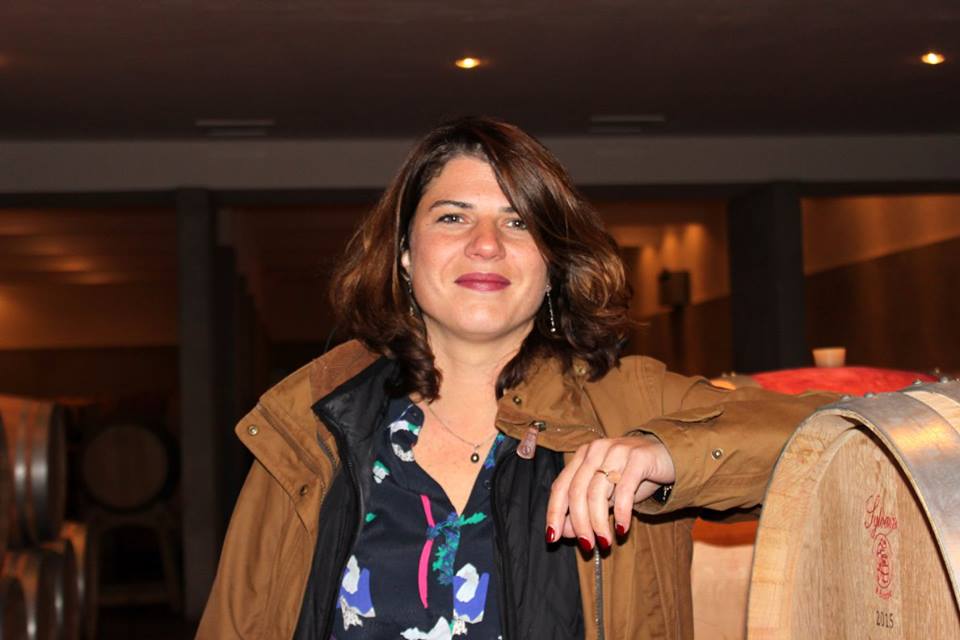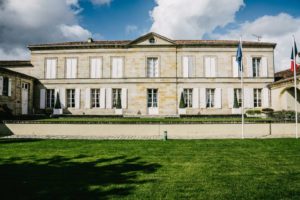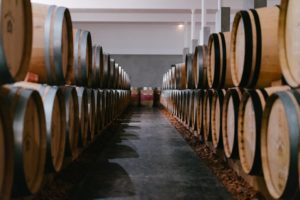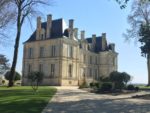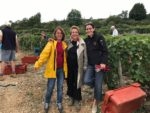Château Grand-Puy Ducasse
Fine and elegant wines… A beautiful value of Pauillac !
The Château Grand-Puy Ducasse is a 40 hectares Médoc estate located in AOC Pauillac. It was elevated to the rank of 5th Grand Cru Classé in 1855.
Arnaud Ducasse founded the property in the middle of the 17th century by acquiring land and a small house from Monsieur Jacques de Ségur, Lord of Lafite. His grandson Pierre Ducasse was the main architect of the extension of the family estate. He acquired many hectares of vineyards in the communes of Pauillac, Saint-Lambert, Saint-Sauveur and three seigneuries of the time: Lafite (Pauillac), Latour (Pauillac) and Beychevelle (Saint-Julien).
When he died in 1797 the property stretched over sixty hectares. His son, Arnaud Ducasse, continued the work of his father: he planted vines on the land previously acquired and also built the present Château Grand-Puy Ducasse.
In 1971, after two centuries at the head of the estate, the Ducasse family ceded the property to merchants in Bordeaux. In 2004, Château Grand-Puy Ducasse was bought by CA Grands Crus with the aim of restoring its reputation to this Grand Cru Classé in Pauillac.
Where does the name of Château Grand-Puy Ducasse come from?
The name comes from the combination of the surname of the founder of the vineyard, Arnaud Ducasse and the name of the place Grand-Puy. The original name of the property at the time of its classification in 1855 was Château Artigues-Arnaud Grand-Puy, but shortly after Mr Ducasse had it renamed back to its name.
If you were to describe your passion in 3 or 4 words what would you say?
“I would say: passion, sharing, exemplarity and sustainability. The last one (note: perenniality) must be understood for the agriculture practiced, but also because the vine, unlike other cultures, is a perennial plant. When we plant it is for future generations … The notion of transmission is very important in our business. ”
What is the Grand-Puy Ducasse‘s signature ? What makes it possible to recognize wines in tasting?
“It’s a rather complicated question because the signature of a wine is the result of the addition of the terroir and the action of Man. In their youth, wines more readily express the action of Man, but after aging, the soil takes over. “
Many things have been reviewed at Château Grand-Puy Ducasse since its takeover by CA Grands Crus in 2004. The “signature” of Grand-Puy Ducasse was slightly modified. In particular, a major restructuring plan has been put in place in the vineyard: tillage, replanting … Our vineyard has been dominated by Cabernet Sauvignon for only a short time. We have also evolved the vinification towards more parcelling selection, better control of extractions, vinification temperatures and maceration … Since 2006 we continue to slowly evolve the vineyard, winemaking and wines with as our ambition a permanent search for Qualitative improvement.
The wines of Château Grand-Puy Ducasse are straight and very frank wines. They may also, in certain cases, especially in their youth take a certain austerity. This one passes over time and leaves room for wines in this style to become more and more assertive. Once good grapes are harvested, the most important thing for us is to adapt the extraction as well as the wood to the potential structure / fruit and the vintage.
The wines of Grand-Puy Ducasse will always be correct, long and racy wines. In this notion of ‘race’ we often find notes of cedar (which do not come from the barrel because they are already found in vats) and cigar cellars. There are also fresh notes, licorice and fruity notes of black or red berries depending on the vintage. Château Grand-Puy Ducasse produces structured wines. They need aging and most often to be decanted / oxygenated. ”
Focus on Anne Le Naour, Technical Director of CA Grands Crus
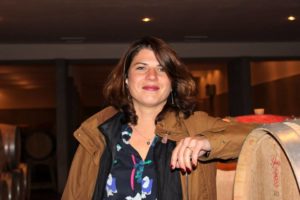 “I am of Parisian origin. I had no special ties to the world of wine except that my parents were in the trade. This allowed me to acquire a sensitivity to tastes, smells and more generally to French gastronomy.
“I am of Parisian origin. I had no special ties to the world of wine except that my parents were in the trade. This allowed me to acquire a sensitivity to tastes, smells and more generally to French gastronomy.
The opportunity to study led me to do a scientific training, math sup / math spec with a specialty in biology, then studies in agronomy. Arriving in the first year with the objective of becoming an agricultural engineer, I realized that I was far from the biology that interested me in the beginning. I naturally turned to the professions of wine and cheese production.
These two products have many similarities to which I was sensitive: a strong impact of the place of production (the terroir, the Men …), a transformed agricultural product, known and recognized internationally, non-delocalizable. Wines and cheeses are carriers of the fame of France abroad, but also vectors of History, sharing, culture and conviviality. In order to make my choice I then decided that I was going to do an internship in these two areas, then that I would decide. I did my first internship in the world of wine and finally I stayed in this sector because it fascinated me. ”
Why did you choose to come to work in the vineyards of Bordeaux and not elsewhere?
“I practiced in virtually every major wine region in France. As soon as I finished my studies, I went to work in Australia (Yarra Valley). I liked the idea of being able to then work in a vineyard not far from a large agglomeration and Bordeaux naturally imposed itself. The size of the farms as well as the hiring prospects for an agronomist also reinforced my choice. After my Australian epic and even though this country and its prospects interested me a lot, I decided, for personal reasons to return to France. I then occupied a property tracking post, an oenologist for Maison Ginestet who, at the time, had follow-up contracts with small producers. It was followed by a position of cellar manager for William Pitters International, within the group Bernard Magrez. Upon the sale of WPI, I followed Bernard Magrez in his property project and I worked for him for more than seven years. In January 2010 I had the opportunity to take over the technical management of all the Bordeaux properties of CA GRANDS CRUS and notably the Château Grand-Puy Ducasse. It was a very nice challenge, because many of them easily identified themselves as “beautifully sleeping”. In seven years we have evolved a lot.
Concerning the other properties of the group, we have also done a lot of work at Château La Tour de Mons, at Clos Saint Vincent (taken over in 2011) where we went from 5 hectares to 17 hectares where again at Château Meyney we brought back the Quality levels in connection with the magnificent terroir and production capacities. ”
How do you manage the vineyard? Do you practice a particular kind of agriculture or an ongoing process?
“We are in the process of certification SME and 14001 for all the properties of the group. The Château La Tour de Mons has already obtained it and all the properties should follow logically in June 2017.
At present, we manage the vineyard with reasoned agriculture, but we also do management tests on certain plots in organic farming, biodynamics or other types of practices that prohibit the use of synthetic molecules. It is important to measure our environmental footprint, but we must integrate it into a more global approach.
Indeed, it is not only the protection of the environment, but also that of the workers in the field and the consumer. Energy savings and other CSR approaches must also be taken into account. ”
What do you think of the last vintage (2016)?
“Since I arrived in Bordeaux in 2001 I have never seen a vintage that is as good as this one qualitatively and quantitatively. Quantitatively, we are relatively close to 2004 or 2007. Qualitatively, it is in my opinion the greatest vintage since 2010. ”
How do you see the future for Château Grand-Puy Ducasse ?
“I see it in the pursuit of a notable qualitative progress, in the improvement of the plot selection and in the improvement of the control of the temperatures.
We have not stopped advancing our tools in recent years and do not lack ideas to continue in this direction and continue to help express the terroir of the Château Grand Puy Ducasse. ”
Anecdote:
“When I arrived in January 2010, there was a cellar master and a culture manager on duty. The cellar master was a little weary of his experience in Grand-Puy and our collaboration was short-lived. We have therefore recruited Cécile Bernier to replace him. Unfortunately the head of culture also had to leave us shortly after an illness, we also had to find him a replacement. We ended up with a new team, young, without experience on this vineyard …
It was a unique experience as we were three ‘new’ technicians to discover a vineyard for the first time. It gave us a challenge and helped us build a team that was united and in tune. ”
Thanks to Anne Le Naour and to Marine Lemmens for their warm hospitality.

